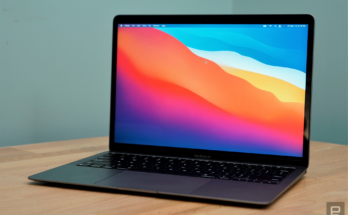The clock has officially started ticking on Deliveroo’s plans to go public in April. After announcing last week that it planned to list on the London Stock Exchange, today the on-demand food delivery company backed by Amazon and others published selected updated financials for the previous fiscal year, along with its Expected Intention to Float (EITF) — a more formal document that marks the two-week period until the company publishes its prospectus and, at the start of April, embarks on its subsequent IPO.
The bottom line is that Deliveroo is still unprofitable. It posted a 2020 underlying loss of £223.7 million ($309 million), but that figure was down by nearly £100 million from 2019, when it chalked up a loss of £317 million ($438 million). It did not disclose revenues (sometimes called turnover) in today’s statement.
The company said that it now serves some 6 million customers, with its three-sided marketplace also including more than 115,000 restaurants, takeaways and grocery stores, and 100,000 riders in 800 locations among 12 markets.
At the same time, Deliveroo showed some clear momentum in a year where many restaurants had to close their doors and shift operations to take-away models because of Covid-19.
It notes that it has been profitable on an “Adjusted EBITDA basis” over two quarters, with underlying gross profit up by 89.5% to £358 million ($495 million) compared to £189 million in 2019.
Its gross transaction volume (total amount spent by consumers ordering food) grew by 64% to £4.1 billion ($5.67 billion) with the run-rate in Q4 surging to £5 billion. This figure is unsurprising when you consider that Q4 represented the holiday period, and additionally the UK market (Deliveroo’s primary market and its home) went through not one but two different periods of being locked down in that quarter (the second of these is still in place).
It also notes that gross profit margin as a percentage of GTV has grown from 5.8% in 2018 to 8.8% in 2020, with some markets getting to 12%.
“The company remains focused on investing in driving growth in a nascent online food market,” it noted in the EITF, although I’m not sure nascent is exactly the word I’d use. Its drivers are easily the most visible of the many delivery services that exist in London. Deliveroo estimates that the restaurant and grocery sectors represent an addressable market of £1.2 trillion ($1.66 trillion) across the 12 regions where it offers services. In that figure, it says that just 3% of sales are estimated to be online, “equivalent to less than 1 out of the 21 weekly meal occasions being online.”
The company was valued at over $7 billion in it last fundraising, a $180 million round from Durable, Fidelity and others, as recently as January of this year.
It’s a huge leap that is the stuff that tech myths are made of (with untold hours of blood, sweat and tears, and a lot of luck too). I met Will Shu, the CEO and founder, when he was just really getting started at Deliveroo, and he seemed somewhat bewildered by how fast the startup was growing and where it was leading him. It’s interesting that he himself hasn’t forgotten those early days, either, which surely help keep the company focused at a time when there are a lot of opportunities, and therefore a lot of potential for focus unravelling.
“I never set out to be a founder or a CEO. I was never into start-ups, I didn’t read TechCrunch. I’m not one of those Silicon Valley types with a million ideas,” he noted in his letter published in the EITF. “I had one idea. One idea born out of personal frustration. An idea that I was fanatically obsessed with: I wanted to get great food delivered from amazing London restaurants.”
The prospectus will tell us how much the company intends to raise in its IPO so we’ll know those numbers soon. In the meantime, Deliveroo said that it plans to “invest in its long-term proposition by developing its core marketplace, enhancing its superior consumer experience, providing restaurant and grocery partners with unique tools to help them grow their businesses, and providing riders with the flexible work they value alongside security.”
It’s also going to continue building out “dark kitchens” (which it brands Editions); Signature, a white-label service for restaurants to offer delivery via their own online channels; Plus, a Prime-style loyalty subscription service; and on-demand grocery — which is also shaping up to be a huge market in Europe and the rest of the world.



